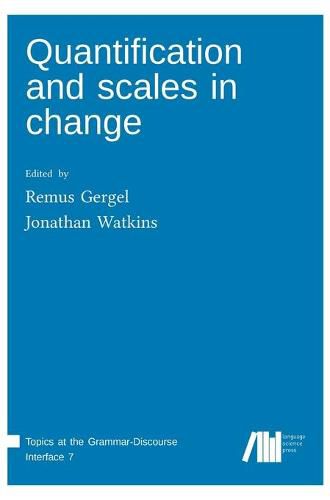Readings Newsletter
Become a Readings Member to make your shopping experience even easier.
Sign in or sign up for free!
You’re not far away from qualifying for FREE standard shipping within Australia
You’ve qualified for FREE standard shipping within Australia
The cart is loading…






This volume contains thematic papers on semantic change which emerged from the second edition of Formal Diachronic Semantics held at Saarland University. Its authorship ranges from established scholars in the field of language change to advanced PhD students whose contributions have equally qualified and have been selected after a two-step peer-review process. The key foci are variablity and diachronic trajectories in scale structures and quantification, but readers will also find a variety of further (and clearly non-disjoint) issues covered including reference, modality, givenness, presuppositions, alternatives in language change, temporality, epistemic indefiniteness, as well as - in more general terms - the interfaces of semantics with syntax, pragmatics and morphology. Given the nature of the field, the contributions are primarily based on original corpus studies (in one case also on synchronic experimental data) and present a series of new findings and theoretical analyses of several languages, first and foremost from the Germanic and Romance subbranches of Indo-European (English, French, German, Italian, Spanish) and from Semitic (with an analysis of universal quantification in Biblical Hebrew).
$9.00 standard shipping within Australia
FREE standard shipping within Australia for orders over $100.00
Express & International shipping calculated at checkout
This volume contains thematic papers on semantic change which emerged from the second edition of Formal Diachronic Semantics held at Saarland University. Its authorship ranges from established scholars in the field of language change to advanced PhD students whose contributions have equally qualified and have been selected after a two-step peer-review process. The key foci are variablity and diachronic trajectories in scale structures and quantification, but readers will also find a variety of further (and clearly non-disjoint) issues covered including reference, modality, givenness, presuppositions, alternatives in language change, temporality, epistemic indefiniteness, as well as - in more general terms - the interfaces of semantics with syntax, pragmatics and morphology. Given the nature of the field, the contributions are primarily based on original corpus studies (in one case also on synchronic experimental data) and present a series of new findings and theoretical analyses of several languages, first and foremost from the Germanic and Romance subbranches of Indo-European (English, French, German, Italian, Spanish) and from Semitic (with an analysis of universal quantification in Biblical Hebrew).